Les États-Unis entrent en guerre est un film américain de genre Guerre réalisé par Frank Capra avec Walter Huston
Les États-Unis entrent en guerre (1945)

Si vous aimez ce film, faites-le savoir !
Durée 1h10
OrigineEtats-Unis
Themes Documentaire sur la guerre, Documentaire historique, Politique, Documentaire sur la Seconde Guerre mondiale
Note67%










War Comes to America is the seventh and final film of Frank Capra's Why We Fight World War II propaganda film series.
The early part of the film is an idealized version of American history which includes mention of the first settlements, the American Revolutionary War (omitting the American Civil War), and the ethnic diversity of America. It lists 22 immigrant nationalities, 19 of them European, and uses the then-current terms "Negro", "Jap", and "Chinaman". This section of the film concludes with a lengthy paean to American inventiveness, economic abundance, and social ideals.
The run-up to World War II is then described, beginning in 1931 with the Japanese invasion of Manchuria. The film examines how American public opinion gradually changed from one of isolationism to one of support for the Allied cause, and demonstrates this using a series of Gallup polls.
In 1936, public opinion is firmly isolationist, with 95% of Americans answering NO to the question "If another world war develops in Europe, should America take part again?". Congress responded with an arms embargo and a "Cash and carry rule" when trading with belligerents in raw materials.
In September 1937, the question "In the current fight between Japan and China, are your sympathies with either side?" is answered CHINA 43%, JAPAN 2%, UNDECIDED 55%, while in June 1939 the same question gives a 74% vote for China. Anti-Japanese sentiment thus forced the US government to block trade in oil and scrap iron with Japan.
In October 1939, 82% of Americans blame Germany for starting the war in Europe, while in January 1941, after the Fall of France, and also the founding of the Tripartite Pact, which was clearly aimed against the United States, the question "Should we keep out of war, or aid Britain, even at the risk of war?", AID BRITAIN got 68% of the vote. This increase in pro-Allied sentiment triggered Lend Lease aid to Britain (and to the Soviet Union after it was attacked by Germany).
Towards the end the film argues in detail (to a backdrop of animated maps and diagrams) that American involvement in the war was essential in terms of self-defense. The dire consequences for the United States of an Axis victory in Eurasia are spelled out:
German conquest of Europe and Africa would bring all their raw materials, plus their entire industrial development, under one control. Of the 2 billion people in the world, the Nazis would rule roughly one quarter, the 500 million people of Europe and Africa, forced into slavery to labor for Germany. German conquest of Russia would add the vast raw materials and the production facilities of another of the world's industrial areas, and of the world's people, another 200 million would be added to the Nazi labor pile.
Japanese conquest of the Orient would pour into their factory the almost unlimited resources of that area, and of the peoples of the earth, a thousand million would come under their rule, slaves for their industrial machine. Altogether, the German, Italian and Japanese aggressors would undertake a catalystic crisis, one that would enslave most of the world's population and liquidate about 90% of cultural life on Earth.
We in North and South America would be left with the raw materials of three-tenths of the earth's surface, against the Axis with the resources of seven-tenths. We would have one industrial region against their three industrial regions. We would have one-eighth of the world's population against their seven-eighths. If we together, along with the other nations of North and South America, could mobilize 30 million fully equipped men, the Axis could mobilize 200 million.
Thus, an Axis victory in Europe and Asia would leave us alone and virtually surrounded facing enemies ten times stronger than ourselves.
The film ends with the Attack on Pearl Harbor—the film shows how the Japanese negotiators in Washington, led by Saburo Kurusu, were still negotiating with the Americans while the attack was taking place in Hawaii. This was "the straw that broke the camel's back" that caused the United States to enter the war.
Synopsis
Face à la menace d’une perte de liberté, les États-Unis entrent en guerre illustre comment l’Amérique est passée de l’isolationnisme à un engagement total.Acteurs

Walter Huston
(Narrateur)

Lloyd Nolan
(Narrateur)
Commentaires
Postez un commentaire :
Suggestions de films similaires à Les États-Unis entrent en guerre
Il y a 134 films ayant les mêmes acteurs, 91 films avec le même réalisateur, 12851 ayant les mêmes genres cinématographiques (dont 323 ayant exactement les mêmes 2 genres que Les États-Unis entrent en guerre), 8197 films qui ont les mêmes thèmes (dont 442 films qui ont les mêmes 4 thèmes que Les États-Unis entrent en guerre), pour avoir au final 70 suggestions de films similaires.Si vous avez aimé Les États-Unis entrent en guerre, vous aimerez sûrement les films similaires suivants :
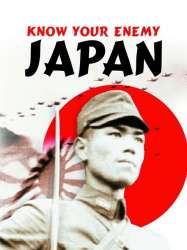 , 1h3
, 1h3Réalisé par Joris Ivens, Frank Capra
Origine Etats-Unis
Genres Guerre, Documentaire, Historique
Thèmes Documentaire sur la guerre, Documentaire historique, Politique, Documentaire sur la Seconde Guerre mondiale
Acteurs John Beal, Howard Duff, Walter Huston, Knox Manning
Note59%





Un remarquable documentaire cinématographique sur la montée du militarisme japonais, malgré les outrances inhérentes à tout film de propagande et à la xénophobie ambiante liée à la guerre.
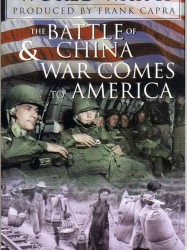
La Bataille de Chine (1944)
, 1h5Réalisé par Frank Capra, Anatole Litvak
Origine Etats-Unis
Genres Guerre, Documentaire
Thèmes Documentaire sur la guerre, Documentaire historique, Politique, Documentaire sur la Seconde Guerre mondiale
Acteurs Anthony Veiller, Walter Huston
Note69%





En envahissant la Chine, le Japon espère ensuite conquérir l’Asie toute entière. Le film utilise de nombreuses images du documentaire de Joris Ivens 400 Millions, réalisé en 1938.
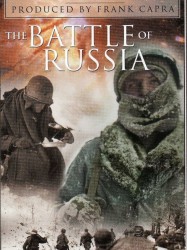 , 1h23
, 1h23Réalisé par Frank Capra, Anatole Litvak
Origine Etats-Unis
Genres Guerre, Documentaire, Historique
Thèmes Documentaire sur la guerre, Documentaire historique, Politique, Documentaire sur la Seconde Guerre mondiale
Acteurs Walter Huston, Anthony Veiller, Nikolai Cherkasov
Note70%





Ce film de propagande américain souligne le besoin d'une alliance russo-américaine contre les nazis.
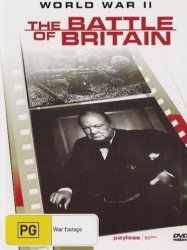
La bataille d’Angleterre (1943)
, 54minutesRéalisé par Frank Capra, Anatole Litvak, Anthony Veiller
Origine Etats-Unis
Genres Guerre, Documentaire, Historique
Thèmes Transport, Aviation, Documentaire sur la guerre, Documentaire historique, Documentaire sur les technologies, Politique, Documentaire sur la Seconde Guerre mondiale
Acteurs Anthony Veiller, Frieda Inescort, Walter Huston
Note70%





Après avoir conquis la France, l’Angleterre est le dernier obstacle qui sépare Hitler de la domination du monde. À plus de 8 000 mètres au-dessus de la Manche, les chasseurs de la Royal Air Force vont livrer une bataille sans concession pour stopper les bombardiers de la Luftwaffe.
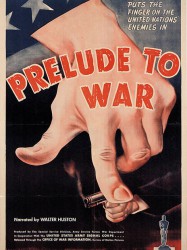 , 53minutes
, 53minutesRéalisé par Frank Capra, Anatole Litvak
Origine Etats-Unis
Genres Guerre, Documentaire, Historique
Thèmes Politique, Documentaire sur la guerre, Documentaire historique, Politique, Documentaire sur la Seconde Guerre mondiale
Acteurs Walter Huston
Note69%





Oscar® du meilleur documentaire en 1943, ce film est le premier de la série Pourquoi nous combattons produite par le Département de la Guerre américain. L’objectif est de décrire et d’expliquer les événements qui ont poussé les États-Unis à entrer en guerre. Les systèmes totalitaires et répressifs allemands, italiens et japonais sont décryptés et opposés à la grande puissance démocratique des États-Unis.

Diviser pour régner (1943)
, 57minutesRéalisé par Frank Capra, Anatole Litvak
Origine Etats-Unis
Genres Guerre, Documentaire
Thèmes Documentaire sur la guerre, Documentaire historique, Politique, Documentaire sur la Seconde Guerre mondiale
Acteurs Knox Manning, Murray Alper, Monte Blue, Ann Codee, Walter Huston
Note71%





Ne désirant pas s’engager sur deux fronts à la fois, Hitler s’est concentré jusqu’alors sur le front de l’Est en réfutant toute hostilité envers la France et la Grande-Bretagne. Mais une fois celui-ci stabilisé, il lance l’offensive à l’Ouest contre les Pays-Bas, la Belgique et bientôt la France…

Les nazis attaquent (1943)
, 41minutesRéalisé par Frank Capra, Anatole Litvak
Origine Etats-Unis
Genres Guerre, Documentaire
Thèmes Documentaire sur la guerre, Documentaire historique, Politique, Documentaire sur la Seconde Guerre mondiale
Acteurs Walter Huston
Note69%





Le film présente et analyse la stratégie allemande pour conquérir l’espace vital hitlérien. Il met en évidence toutes les bassesses orchestrées par Hitler pour étendre petit à petit son empire, malgré les pactes de non-agression signés avec la plupart des pays européens.
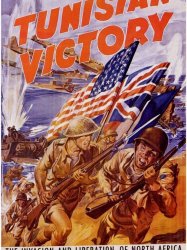
Tunisian Victory (1944)
, 1h15Réalisé par John Huston, Frank Capra, John Boulting, Roy Boulting, Hugh St Clair Stewart
Origine Royaume-uni
Genres Guerre, Documentaire
Thèmes Documentaire sur la guerre, Documentaire historique, Politique, Documentaire sur la Seconde Guerre mondiale
Acteurs Leo Genn, Burgess Meredith, Bernard Miles
Note65%






Here Is Germany (1945)
, 1hRéalisé par Frank Capra
Origine Etats-Unis
Genres Guerre, Documentaire
Thèmes Documentaire sur la guerre, Documentaire historique, Politique, Documentaire sur la Seconde Guerre mondiale
Acteurs Anthony Veiller
Note62%





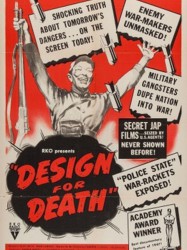
Design for Death (1948)
, 48minutesRéalisé par Frank Capra, Richard Fleischer
Origine Etats-Unis
Genres Guerre, Documentaire
Thèmes Documentaire sur la guerre, Documentaire historique, Politique, Documentaire sur la Seconde Guerre mondiale
Acteurs Kent Smith, Hans Conried
Note62%





 Connexion
Connexion
